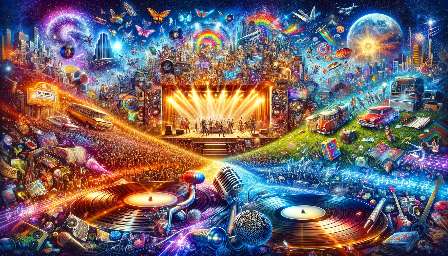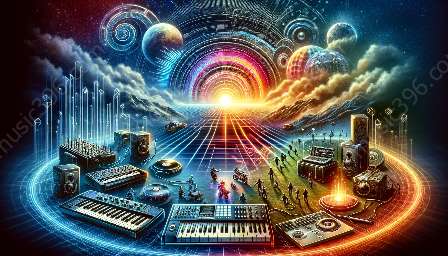Disco music, with its infectious beats and captivating melodies, has left an indelible mark on the history of music. Exploring the key elements that defined the disco music sound provides insight into the evolution of this genre and its impact on musical history.
The History of Disco Music
Disco emerged in the 1970s, gaining immense popularity in clubs and on the airwaves. It was characterized by its pulsating rhythms, lush orchestration, and soulful vocals. The genre's roots can be traced back to various musical styles, including funk, soul, and R&B. Key figures such as Donna Summer, KC and the Sunshine Band, and the Bee Gees were among the trailblazers who propelled disco into the mainstream.
Elements Defining the Disco Music Sound
Several key elements defined the unique sound of disco music:
- Four-on-the-Floor Beat: A defining feature of disco music was the prominent use of the four-on-the-floor beat, characterized by a steady bass drum on each quarter note. This driving rhythmic pattern created an irresistible dance-friendly groove that became synonymous with disco.
- Orchestration and Arrangements: Disco music often featured lush orchestration and elaborate arrangements, incorporating strings, horns, and rhythmic guitar patterns. These elements contributed to the genre's opulent and luxurious sound, evoking a sense of escapism and celebration.
- Funk and Soul Influences: Drawing from its predecessors, disco music incorporated elements of funk and soul, infusing the genre with deep, groovy basslines, funky guitar riffs, and soulful vocal performances. These influences added depth and soul to the disco sound, making it inherently danceable and emotionally resonant.
- Studio Production Techniques: The era of disco music witnessed advancements in studio production techniques, leading to the use of lush reverb, orchestral overdubs, and intricate mixing, resulting in the genre's signature polished and glossy sound. Innovations such as the addition of synthesizers further expanded the sonic landscape of disco.
- Upbeat and Catchy Melodies: Disco music was characterized by its infectious melodies and catchy hooks, often delivered through soaring vocal performances and captivating instrumental hooks. These upbeat and uplifting elements made disco music irresistibly fun and accessible, fostering a sense of joy and community on the dance floor.
- Cultural and Social Impact: Beyond its musical components, disco music had a profound cultural and social impact, serving as a unifying force for diverse communities and providing an empowering platform for expression and liberation. The inclusive nature of disco's rhythmic escapism transcended boundaries and brought people together, reflecting the spirit of the era.
Legacy and Influence on Music History
The influence of disco music reverberates through the corridors of musical history, shaping subsequent genres and leaving an enduring legacy. Its impact can be observed in the realms of dance music, pop, and electronic music, with artists and producers drawing inspiration from disco's infectious rhythms and opulent arrangements. Furthermore, the cultural impact of disco continues to resonate, as its spirit of inclusivity and celebration remains a hallmark of its enduring influence.
Understanding the key elements that defined the disco music sound provides valuable insight into the evolution of this genre and its lasting impact on the history of music. From its pulsating rhythms to its cultural resonance, disco music continues to captivate audiences and inspire new generations of artists and music enthusiasts.




































